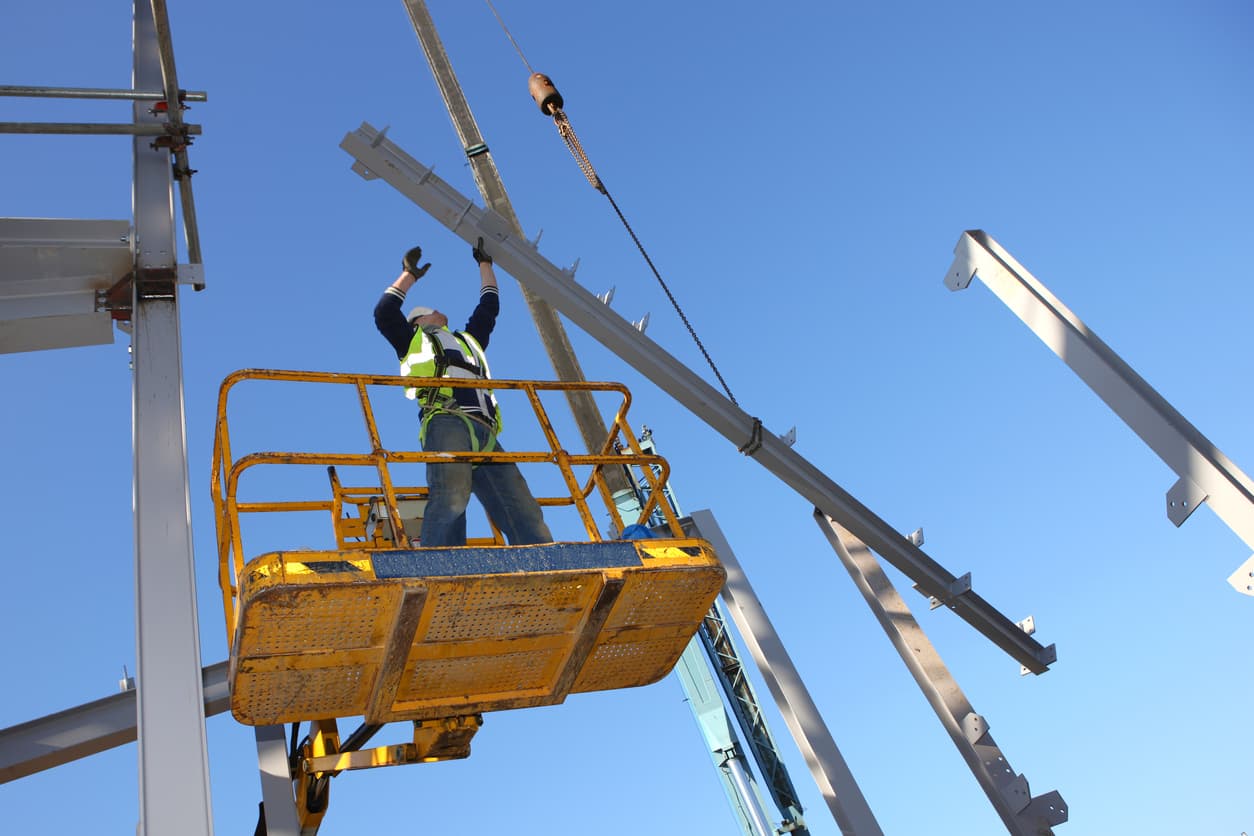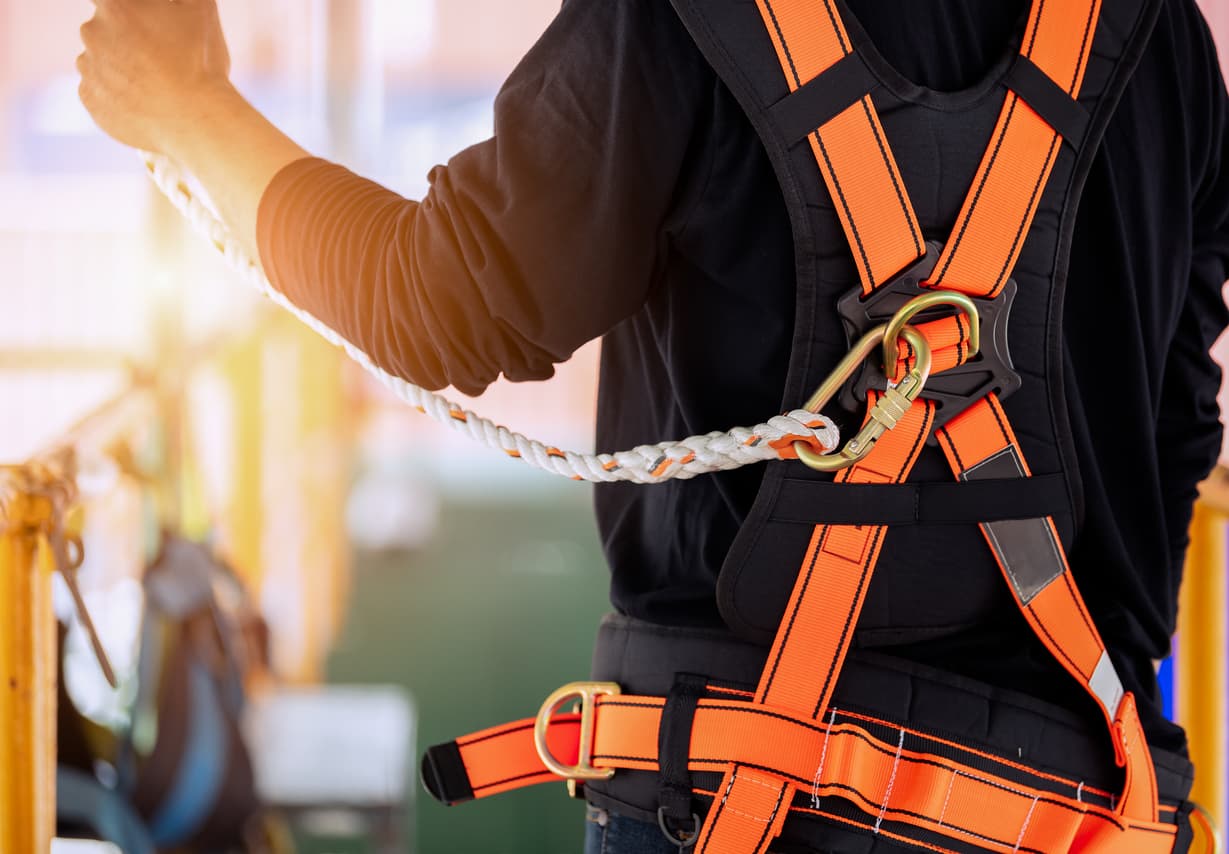The UK construction industry is a massive contributor to the overall economy, and well over 2.2 million individuals make up this workforce powerhouse.
Because of the very nature of the job, the construction industry has a myriad of different skill sets and related working arena. One of the factors of this complicated and often risky working arena is the sheer variety of equipment required to make these tasks possible.
Many of these are designed for working at height and the individuals using them must take the safe working at height training course. This article looks at five examples of access platforms and explains why and where they are in use within the UK construction industry.
The five types of access platforms used in the construction industry include:
- Edge Protection Systems
- Folding Work Platforms
- Podium Platforms
- Mobile Access Towers
- Powered Access Platforms
Edge Protection Systems
Due to the risks of working from height, you must address every possible hazard so that a safe solution is found. When construction workers are required to work on a roof, there is a constant risk of falling or slipping, which is why edge protection systems are vital for this type of work.
Working from any height is a dangerous activity, and even a fall from a few feet can cause serious injury. The edge protection system is put in place to reduce a worker’s risk of falling off the roof or an elevated work surface.
Temporary roof edge protection systems are available to provide a safety solution while work is underway. At a minimum, the edge protection system can be something as basic as a principal barrier surrounding the edge of the roof, combined with either an immediate guardrail or immediate protection for the worker. A toeboard should also be available to attach to. These should meet UK safety standards and need to be sturdy enough to stop a full-grown man from falling off the rooftop or elevated surface.
Folding Work Platforms
Folding work systems are also known as hop-up systems, and they are beneficial for many different working-from-height scenarios. There is no one-size-fits-all for folding work platforms as they are used for various operations.
However, folding work platforms are very popular with painters and decorators as they offer a portable and lightweight way to reach those ceilings and upper wall areas.
The platform’s legs unfold and lock into place to offer a sturdy and safe working platform. A typical folding work platform will be between 900mm and 100mm long and the height would be around 600mm. Despite the seemingly diminutive dimensions, all workers should be familiar with the appropriate safety precautions before using a folding work platform.
Podium Platforms
Podium platform steps are a safe and useful alternative to conventional step ladders for use in the UK construction industry. The platform features an aluminium tube that is then decked with a wooden layer, providing a secure working base. This base offers a slip-resistant and sturdy method platform from which the worker can access higher areas.
These can be as high as 2 metres and the base is also equipped with guardrails. There is far less risk of falling in comparison with a ladder and these are recommended for all types of painting and decorating activities.
There are also podium platforms which are designed specifically for use on stairs and other problem areas to make working from height that bit extra safe.
Mobile Access Towers
These are also known as mobile scaffold towers and have long been the mainstay of external and internal working-from-height access equipment. These platforms are much more flexible than traditional scaffolding, as you can position them exactly where you want.
A typical mobile access tower can be from 1 meter tall to 5 or 6 times that height. Working from this equipment is risk-laden, and the Work at Height Regulation 2005 has addressed these issues.
Any worker who needs to use a mobile access tower must attend the correct HSE approved PASMA scaffold tower training course. Failure to comply with these regulations could lead to severe injuries or death.
Powered Access Platforms
Unlike Mobile Access Towers, Powered Access Towers provide a portable solution to access. These are also known as aerial work platforms and feature an elevated working platform that is usually powered by a mechanical device. Powered Access Platforms include cherry pickers, PAV lifts, Scissor lifts, lorry mounted platforms and more. Working from such a device requires a lot of safety awareness, and they can often reach heights above 10 meters.
Despite the need for both elevation control and platform activities, you will find that a single worker operates these platforms. . As it’s usually one worker completing all aspects of the operation, it is vital that all powered access platform workers undergo the proper operational powered access training.

Health & Safety
The Work at Height Regulations of 2005 governs protection requirements for construction workers at risk of falling in the UK. If you intend to work with any of these access platforms, ensure that your employer has offered you the correct training courses.
At Boss Training, we offer a Working at Height Training course designed for employees working at height or for those supervising. If you require any assistance to understand the training requirements for your employees who work at height, please get in touch with the Boss Training team.
As specialists in health and safety training, we are confident we can help.
